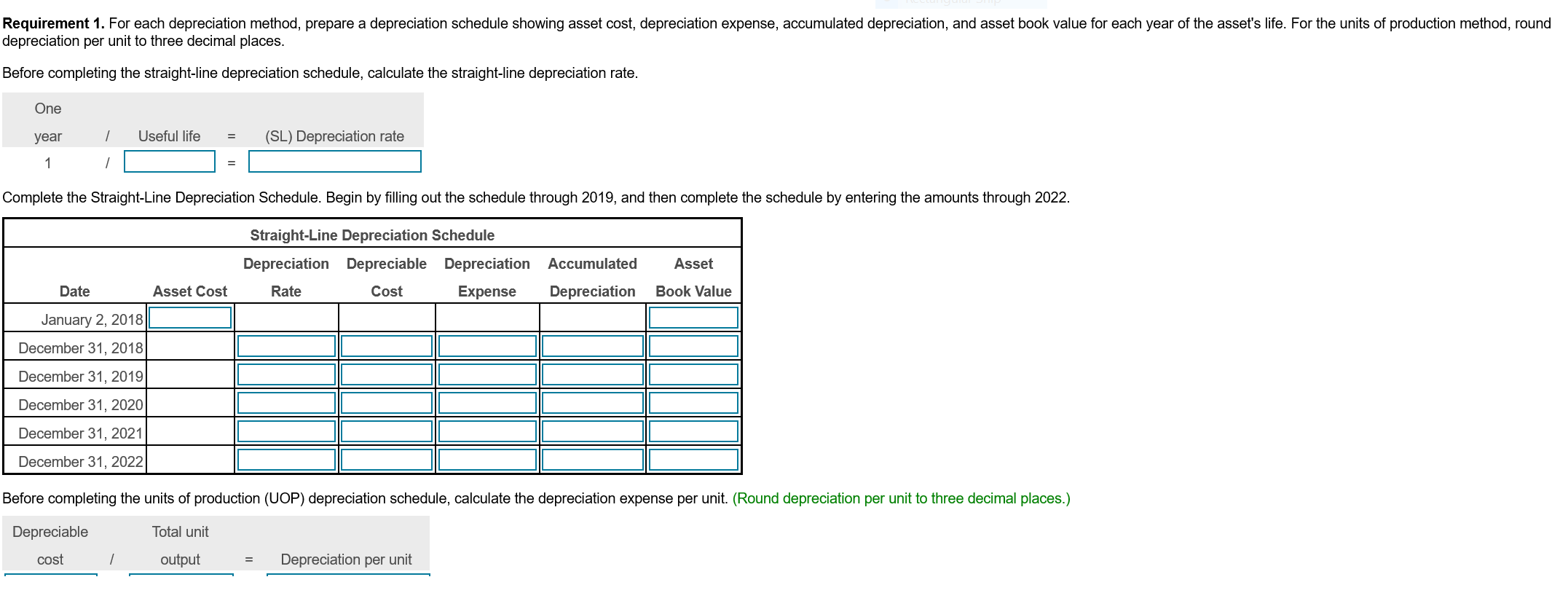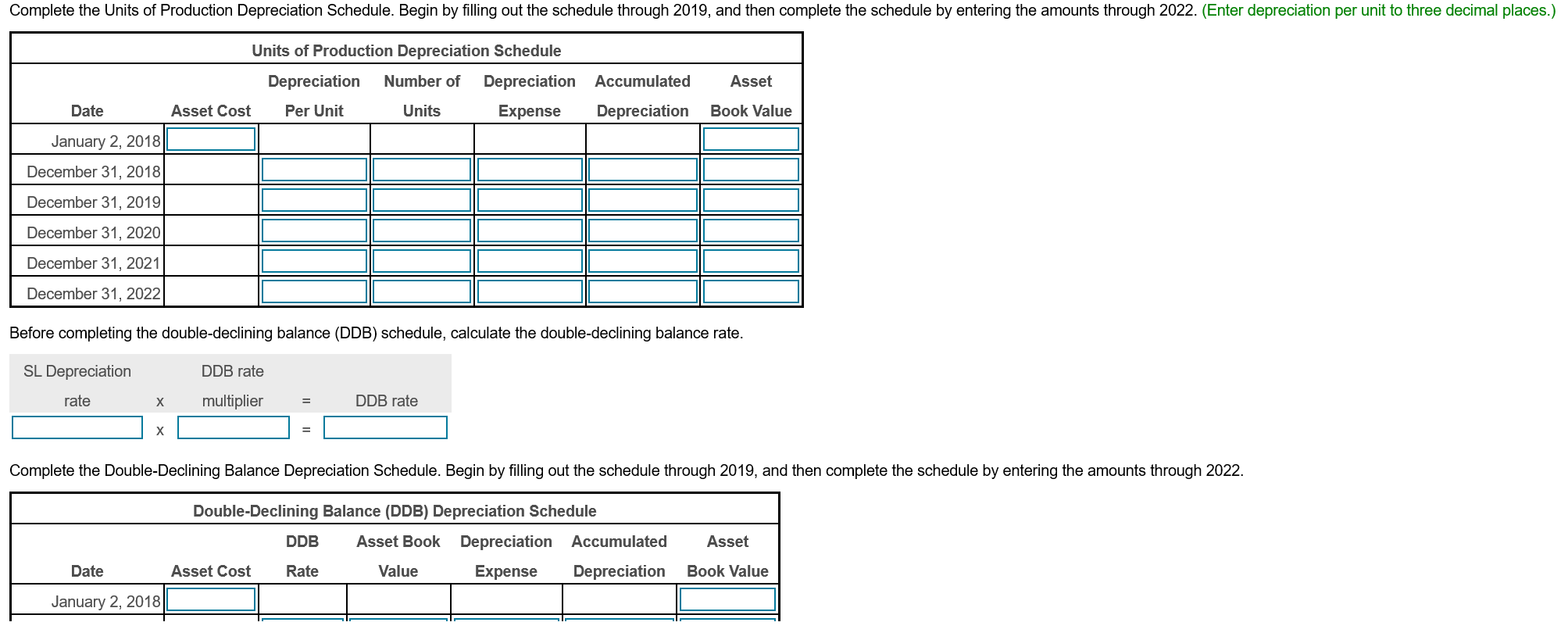


On January 2, 2018, Tucker Enterprises, Inc., paid $204,500 for equipment used in manufacturing automotive supplies. In addition to the basic purchase price, the company paid $900 for transportation charges, $800 for insurance for the equipment while in transit, $11,600 sales tax, and $2,200 for a special platform on which to place the equipment in the plant. Management of Tucker Enterprises, Inc., estimates that the equipment will remain in service for five years and have a residual value of $20,000. The equipment will produce 60,000 units the first year, with annual production decreasing by 10,000 units during each of the next four years (i.e., 50,000 units in year 2; 40,000 units in year 3; and so on, for a total of 200,000 units). In trying to decide which depreciation method to use, Tucker Enterprises, Inc., requested a depreciation schedule for each of the three depreciation methods (straight-line, units of production, and double-declining balance). Requirement 1. For each depreciation method, prepare a depreciation schedule showing asset cost, depreciation expense, accumulated depreciation, and asset book value for each year of the asset's life. For the units of production method, round depreciation per unit to three decimal places. Before completing the straight-line depreciation schedule, calculate the straight-line depreciation rate. One I Useful life (SL) Depreciation rate year 1 = = Complete the Straight-Line Depreciation Schedule. Begin by filling out the schedule through 2019, and then complete the schedule by entering the amounts through 2022. Straight-Line Depreciation Schedule Depreciation Depreciable Depreciation Rate Cost Expense Accumulated Depreciation Asset Book Value Date Asset Cost January 2, 2018 December 31, 2018 December 31, 2019 December 31, 2020 December 31, 2021 December 31, 2022 Before completing the units of production (UOP) depreciation schedule, calculate the depreciation expense per unit. (Round depreciation per unit to three decimal places.) Depreciable cost Total unit output / = Depreciation per unit Complete the Units of Production Depreciation Schedule. Begin by filling out the schedule through 2019, and then complete the schedule by entering the amounts through 2022. (Enter depreciation per unit to three decimal places.) Units of Production Depreciation Schedule Depreciation Number of Depreciation Asset Cost Per Unit Units Expense Accumulated Depreciation Asset Book Value Date January 2, 2018 December 31, 2018 December 31, 2019 December 31, 2020 December 31, 2021 December 31, 2022 Before completing the double-declining balance (DDB) schedule, calculate the double-declining balance rate. SL Depreciation rate DDB rate multiplier X = DDB rate Complete the Double-Declining Balance Depreciation Schedule. Begin by filling out the schedule through 2019, and then complete the schedule by entering the amounts through 2022. Double-Declining Balance (DDB) Depreciation Schedule DDB Asset Book Depreciation Accumulated Asset Cost Rate Expense Depreciation Asset Book Value Date January 2, 2018









